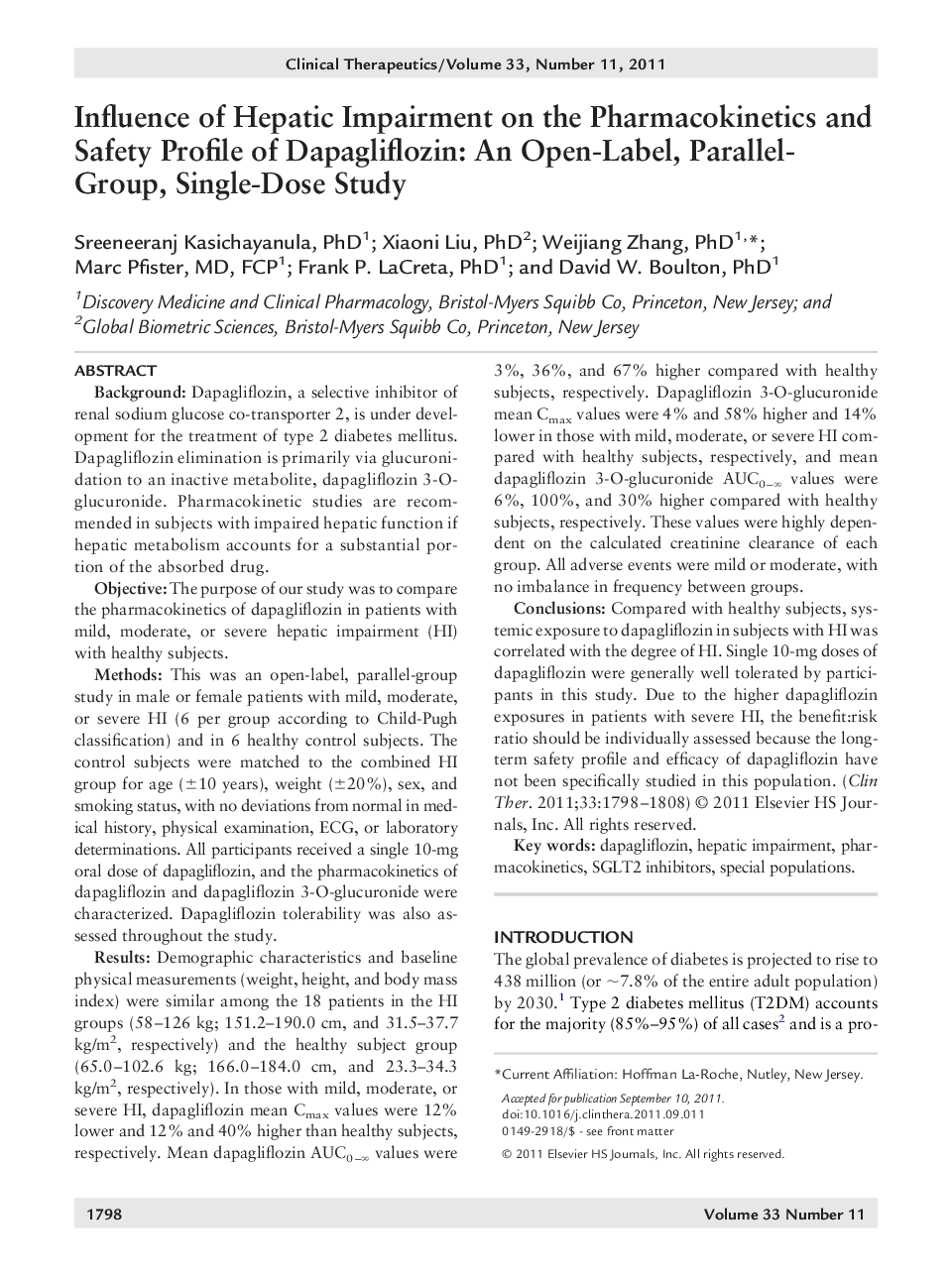| کد مقاله | کد نشریه | سال انتشار | مقاله انگلیسی | نسخه تمام متن |
|---|---|---|---|---|
| 2527415 | 1119915 | 2011 | 11 صفحه PDF | دانلود رایگان |

BackgroundDapagliflozin, a selective inhibitor of renal sodium glucose co-transporter 2, is under development for the treatment of type 2 diabetes mellitus. Dapagliflozin elimination is primarily via glucuronidation to an inactive metabolite, dapagliflozin 3-O-glucuronide. Pharmacokinetic studies are recommended in subjects with impaired hepatic function if hepatic metabolism accounts for a substantial portion of the absorbed drug.ObjectiveThe purpose of our study was to compare the pharmacokinetics of dapagliflozin in patients with mild, moderate, or severe hepatic impairment (HI) with healthy subjects.MethodsThis was an open-label, parallel-group study in male or female patients with mild, moderate, or severe HI (6 per group according to Child-Pugh classification) and in 6 healthy control subjects. The control subjects were matched to the combined HI group for age (±10 years), weight (±20%), sex, and smoking status, with no deviations from normal in medical history, physical examination, ECG, or laboratory determinations. All participants received a single 10-mg oral dose of dapagliflozin, and the pharmacokinetics of dapagliflozin and dapagliflozin 3-O-glucuronide were characterized. Dapagliflozin tolerability was also assessed throughout the study.ResultsDemographic characteristics and baseline physical measurements (weight, height, and body mass index) were similar among the 18 patients in the HI groups (58–126 kg; 151.2–190.0 cm, and 31.5–37.7 kg/m2, respectively) and the healthy subject group (65.0–102.6 kg; 166.0–184.0 cm, and 23.3–34.3 kg/m2, respectively). In those with mild, moderate, or severe HI, dapagliflozin mean Cmax values were 12% lower and 12% and 40% higher than healthy subjects, respectively. Mean dapagliflozin AUC0–∞ values were 3%, 36%, and 67% higher compared with healthy subjects, respectively. Dapagliflozin 3-O-glucuronide mean Cmax values were 4% and 58% higher and 14% lower in those with mild, moderate, or severe HI compared with healthy subjects, respectively, and mean dapagliflozin 3-O-glucuronide AUC0–∞ values were 6%, 100%, and 30% higher compared with healthy subjects, respectively. These values were highly dependent on the calculated creatinine clearance of each group. All adverse events were mild or moderate, with no imbalance in frequency between groups.ConclusionsCompared with healthy subjects, systemic exposure to dapagliflozin in subjects with HI was correlated with the degree of HI. Single 10-mg doses of dapagliflozin were generally well tolerated by participants in this study. Due to the higher dapagliflozin exposures in patients with severe HI, the benefit:risk ratio should be individually assessed because the long-term safety profile and efficacy of dapagliflozin have not been specifically studied in this population.
Journal: Clinical Therapeutics - Volume 33, Issue 11, November 2011, Pages 1798–1808